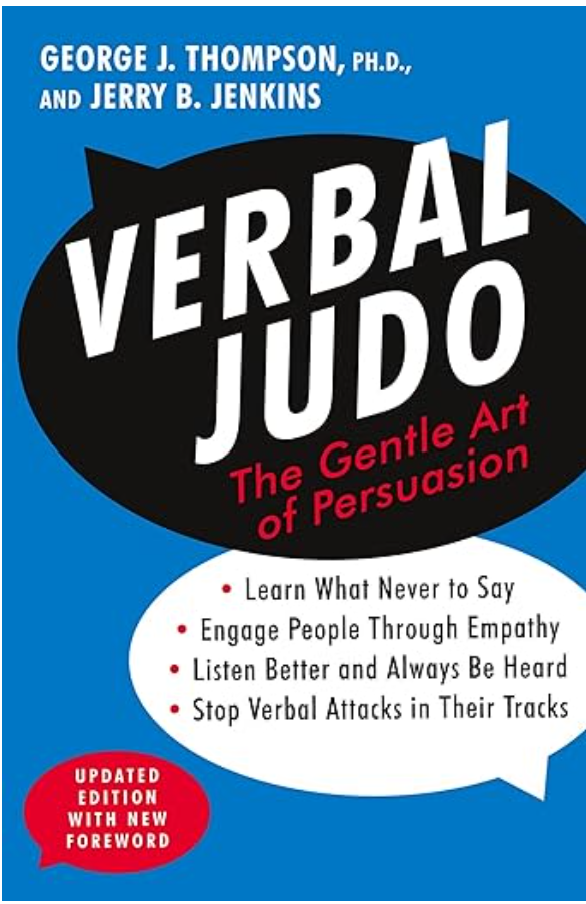Verbal Judo: The Gentle Art of Persuasion – Mastering the Art of Persuasion: How Verbal Judo Defuses Conflict and Builds Influence
The Workplace Problem: How Do You De-escalate Tense Conversations?
Workplace conflicts often escalate because people respond with frustration, defensiveness, or authority instead of strategy.
HR professionals, managers, and leaders need to resolve disputes, handle difficult employees, and influence teams—but many struggle to communicate effectively under pressure.
So how can you navigate workplace tension without making it worse?
What This Book is About
In Verbal Judo: The Gentle Art of Persuasion, George J. Thompson, a former police officer and linguistics expert, introduces proven communication techniques to de-escalate conflict, gain cooperation, and lead conversations with authority and respect.
Originally developed for law enforcement, these principles apply to any workplace setting where persuasion, conflict resolution, and strong communication skills are essential.
Key Takeaways for HR and Workplace Leaders
Emotion Leads to Escalation—Control Your Response – The first step in managing conflict is staying calm and in control, no matter how the other person reacts.
People Don’t Respond Well to Orders—They Respond to Persuasion – Telling someone what to do creates resistance; leading them to the right decision increases compliance.
The Five Universal Truths of Human Interaction:
People want to be respected.
People want to be asked rather than told.
People want to be given options rather than threats.
People want a second chance.
People want to be heard.
How to Redirect Negative Energy in Conversations – Instead of reacting emotionally, reframe the discussion, acknowledge concerns, and guide the conversation forward.
Words Can Be Weapons or Shields – The way something is said can either escalate or diffuse a conflict.
Deflecting Insults is More Powerful Than Responding to Them – Responding to rudeness with composure gives you control over the conversation.
Workplace Tools and Models from the Book
The "Tactical Empathy" Technique – Using active listening and understanding to lower resistance and gain cooperation.
The "Five-Step Persuasion Process" – A method for guiding conversations toward resolution rather than confrontation.
The "Deflection and Redirection" Strategy – How to handle rude, aggressive, or uncooperative employees without losing authority.
The "Paraphrasing to Gain Control" Technique – A powerful tool to take control of conversations and avoid misunderstandings.
Why This Matters for HR and Workplace Leaders
HR professionals and managers must handle difficult conversations without making conflicts worse. Verbal Judo provides strategies to:
✔ De-escalate workplace disputes before they become major conflicts.
✔ Persuade employees and leaders to adopt workplace changes without resistance.
✔ Help managers communicate more effectively with difficult employees.
✔ Create a more respectful and cooperative workplace culture.
How This Connects to Workplace Assessments and Restorations
Many workplace assessments reveal communication breakdowns that cause ongoing tension, such as:
Employees feeling unheard or disrespected.
Leaders struggling to get buy-in for workplace changes.
Tense conversations escalating due to poor communication tactics.
By applying Verbal Judo principles, HR leaders can help organizations handle conflict with persuasion instead of force, leading to smoother workplace interactions.
How Can You Apply This?
➡️ Are workplace conversations escalating instead of resolving?
➡️ Do employees and leaders struggle to communicate effectively under pressure?
Mastering Verbal Judo techniques can transform difficult conversations into productive ones, reducing workplace stress and conflict.
Where to Buy
Interested in reading Verbal Judo: The Gentle Art of Persuasion? You can purchase it here:
📚 Amazon
📚 Barnes & Noble

